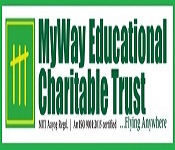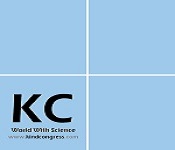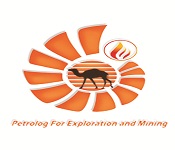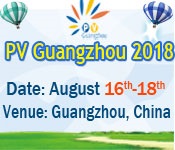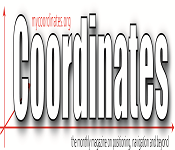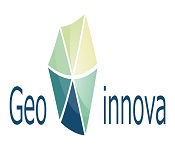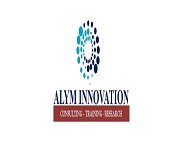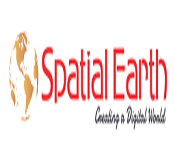Theme: An Insight into Solid Earth & Soil materials for futuristic advancements
Geology Congress 2018
Track-1: Geology & Environmental Sustainability
Geology is a reasonably current science up to the 1790’s, We have come a long way since then, with the theories of plate tectonics explaining the position of the continents, volcanoes and earthquakes, and evolution, the fossil record we see in the rocks. The emplacement of granites and their erosion can give us a grasp of the vast span of geological time, and geologists are the scientists who find most of the world’s natural resources. The main goal of Environmental Sustainability is to preserve natural resources and to develop alternate sources of power while reducing pollution towards environment. Many of the projects that are entrenched in environmental Sustainability and this may include replantation of forests, stabilizing wetlands and shielding natural areas from resources harvesting, and the major criticism of environmental sustainability is to recruits the significances that can have a probabilities with the need of a mounting commercial society. Environmental Sustainability is used to diminish the reduction of natural resources, and to promote the development without causing destruction to the environment. Geological conferences aim to inspire the young researchers, geologist, geophysicists, and geoscientist, students with the renowned speakers from 25 countries and also to bring together researchers in all aspects of Geology and related disciplines. And it may tend to endorse, inspire and influence more support, understanding and collaboration among scientists working in the field of Geology and Environmental Sustainability.
Relevant Conferences: Geology Congress| Soil Science Events | Earth Science Meetings| Petroleum Geology Conferences
2nd Annual Congress on Soil & Water Sciences, June 14-15, 2018 Dublin, Ireland; 5th International Conference on Geological & Environmental Sustainability, August 13-14, 2018, Bali, Indonesia; 6th International Meeting on Oceanography, September 21-22, 2018 Dallas, Texas, USA; 4th International Conference on GIS & Remote Sensing, September 27-28, 2018 Berlin, Germany; 6th International Conference on Oceanography & Marine Biology, October 07-09, 2018 Melbourne, Australia; 3rd International Convention on Geosciences & Remote Sensing, October 19-20, 2018 Ottawa, Ontario, Canada; International Conference on Geology & Earth Science, May 2-4, 2018 , Rome, Italy; International Conference On Oceanography & Marine Science, September 24-26, 2018, Dubai, UAE.
Related Associations or Societies:
American Association of Petroleum Geologists (AAPG)|Australian Institute of Geoscientists (AIG)|Australian Society of Exploration Geophysicists (ASEG)|Canadian Institute of Mining, Metallurgy and Petroleum (CIM)|European Association of Geoscientists and Engineers (EAGE)|Chinese Academy of Geological Sciences (CAGS)|Geological Society of London (GSL)| Geological Society of Washington (GSW)|Geological Survey of Austria (GSA)| Geoscience Information Society (GSIS)|Society of Vertebrate Paleontology (SVP)|Soil Science Society of America (SSSA)| Society for Sedimentary Geology (SEPM)|Society of Economic Geologists (SEG)| Society of Mineral Museum Professionals (SMMP)| United States Geological Survey (USGS)| Pittsburgh Association of Petroleum Geologists (PAPG).
Track-2: Geology & Environmental Interactions
The series of glitches that geotechnical engineers must face is increasing in complexity and scope. Often, complexity arises from the interaction between the soil and the environment. To deal with this type of problem, the classical soil mechanics formulation is progressively generalized in order to incorporate the effects of new phenomena and new variables on soil behavior. Recent advances in unsaturated soil mechanics are presented first: it is shown that they provide a consistent framework for understanding the engineering behavior of unsaturated soils, and the effects of suction and moisture changes. Building on those developments, soil behavior is further explored by considering thermal effects for two opposite cases: high temperatures, associated with the problem of storage and disposal of high-level radioactive waste; and low temperatures in problems of freezing ground. Finally, the lecture examines some issues related to chemical effects on soils and rocks, focusing in part on the subject of tunneling in sulphate-bearing rocks. In each case new environmental variables are identified, enhanced theoretical formulations are established, and new or extended constitutive laws are presented. Particular emphasis is placed on mechanical constitutive equations, as they are especially important in geotechnical engineering. The lecture includes summary accounts of a number of case histories that illustrate the relevance and implications of the developments described for geotechnical engineering practice.
Relevant Conferences: Geology Congress| Soil Science Events | Earth Science Meetings| Petroleum Geology Conferences
2nd Annual Congress on Soil & Water Sciences, June 14-15, 2018 Dublin, Ireland; 5th International Conference on Geological & Environmental Sustainability, August 13-14, 2018, Bali, Indonesia; 6th International Meeting on Oceanography, September 21-22, 2018 Dallas, Texas, USA; 4th International Conference on GIS & Remote Sensing, September 27-28, 2018 Berlin, Germany; 6th International Conference on Oceanography & Marine Biology, October 07-09, 2018 Melbourne, Australia; 3rd International Convention on Geosciences & Remote Sensing, October 19-20, 2018 Ottawa, Ontario, Canada; International Conference on Geology & Earth Science, May 2-4, 2018 , Rome, Italy; International Conference On Oceanography & Marine Science, September 24-26, 2018, Dubai, UAE.
Related Associations or Societies:
American Association of Petroleum Geologists (AAPG)|Australian Institute of Geoscientists (AIG)|Australian Society of Exploration Geophysicists (ASEG)|Canadian Institute of Mining, Metallurgy and Petroleum (CIM)|European Association of Geoscientists and Engineers (EAGE)|Chinese Academy of Geological Sciences (CAGS)|Geological Society of London (GSL)| Geological Society of Washington (GSW)|Geological Survey of Austria (GSA)| Geoscience Information Society (GSIS)|Society of Vertebrate Paleontology (SVP)|Soil Science Society of America (SSSA)| Society for Sedimentary Geology (SEPM)|Society of Economic Geologists (SEG)| Society of Mineral Museum Professionals (SMMP)| United States Geological Survey (USGS)| Pittsburgh Association of Petroleum Geologists (PAPG).
Track-3: Soil stability analysis
A finite-element method is used to analyze the slope stability problem and to examine the effect of soil militancy on the stability of slopes. It is found that soil militancy has a significant effect on the stability of slopes, and the higher values of dilation angle lead to larger stability numbers. Therefore, the stability numbers obtained from limit analyses (lower/upper bound solutions) are not conservative for granular soils that exhibit a stretching angle smaller than a soil's friction angle. The factor of safety equations are written in the same form, knowing whether moment and (or) force equilibrium is explicitly satisfied. The normal force equation is of the same form for all methods with the exception of the conventional method. The method of handling the inter slice forces differentiates the normal force equations. A new derivation for the Morgenstern–Price method is presented and is called the 'best-fit regression' solution. It involves the independent solution of the force and moment equilibrium factors of safety for various values of λ. The best-fit regression solution gives the same factor of safety as the 'Newton–Rap son' solution.
Relevant Conferences: Geology Congress| Soil Science Events | Earth Science Meetings| Petroleum Geology Conferences
2nd Annual Congress on Soil & Water Sciences, June 14-15, 2018 Dublin, Ireland; 5th International Conference on Geological & Environmental Sustainability, August 13-14, 2018, Bali, Indonesia; 6th International Meeting on Oceanography, September 21-22, 2018 Dallas, Texas, USA; 4th International Conference on GIS & Remote Sensing, September 27-28, 2018 Berlin, Germany; 6th International Conference on Oceanography & Marine Biology, October 07-09, 2018 Melbourne, Australia; 3rd International Convention on Geosciences & Remote Sensing, October 19-20, 2018 Ottawa, Ontario, Canada; International Conference on Geology & Earth Science, May 2-4, 2018 , Rome, Italy; International Conference On Oceanography & Marine Science, September 24-26, 2018, Dubai, UAE.
Related Associations or Societies:
American Association of Petroleum Geologists (AAPG)|Australian Institute of Geoscientists (AIG)|Australian Society of Exploration Geophysicists (ASEG)|Canadian Institute of Mining, Metallurgy and Petroleum (CIM)|European Association of Geoscientists and Engineers (EAGE)|Chinese Academy of Geological Sciences (CAGS)|Geological Society of London (GSL)| Geological Society of Washington (GSW)|Geological Survey of Austria (GSA)| Geoscience Information Society (GSIS)|Society of Vertebrate Paleontology (SVP)|Soil Science Society of America (SSSA)| Society for Sedimentary Geology (SEPM)|Society of Economic Geologists (SEG)| Society of Mineral Museum Professionals (SMMP)| United States Geological Survey (USGS)| Pittsburgh Association of Petroleum Geologists (PAPG).
Track-4 Mining and mineral resources
Mining geology is an applied science which chains the principles of economic geology and mining engineering to the development of a defined mineral resource. Mining geologist and engineers work to develop an identified ore deposit to economically extract the ore. A mineral resource is a concentration or occurrence of material of intrinsic economic interest in or on the earth’s crust in such form, quality and quantity that there are reasonable prospects for eventual economic extraction. Mineral resources are further sub-divided, in order of increasing geological confidence, into inferred, indicated and measured categories. Inferred mineral resource is the part of a mineral resource for which tonnage, grade and mineral content can be estimated with a low level of confidence. It is inferred from geological evidence and assumed but not verified geological or grade continuity. It is based on information gathered through appropriate techniques from locations such as outcrops, trenches, pits, workings and drill holes which may be of limited or indefinite quality and reliability.
Relevant Conferences: Geology Congress| Soil Science Events | Earth Science Meetings| Petroleum Geology Conferences
2nd Annual Congress on Soil & Water Sciences, June 14-15, 2018 Dublin, Ireland; 5th International Conference on Geological & Environmental Sustainability, August 13-14, 2018, Bali, Indonesia; 6th International Meeting on Oceanography, September 21-22, 2018 Dallas, Texas, USA; 4th International Conference on GIS & Remote Sensing, September 27-28, 2018 Berlin, Germany; 6th International Conference on Oceanography & Marine Biology, October 07-09, 2018 Melbourne, Australia; 3rd International Convention on Geosciences & Remote Sensing, October 19-20, 2018 Ottawa, Ontario, Canada; International Conference on Geology & Earth Science, May 2-4, 2018 , Rome, Italy; International Conference On Oceanography & Marine Science, September 24-26, 2018, Dubai, UAE.
Related Associations or Societies:
American Association of Petroleum Geologists (AAPG)|Australian Institute of Geoscientists (AIG)|Australian Society of Exploration Geophysicists (ASEG)|Canadian Institute of Mining, Metallurgy and Petroleum (CIM)|European Association of Geoscientists and Engineers (EAGE)|Chinese Academy of Geological Sciences (CAGS)|Geological Society of London (GSL)| Geological Society of Washington (GSW)|Geological Survey of Austria (GSA)| Geoscience Information Society (GSIS)|Society of Vertebrate Paleontology (SVP)|Soil Science Society of America (SSSA)| Society for Sedimentary Geology (SEPM)|Society of Economic Geologists (SEG)| Society of Mineral Museum Professionals (SMMP)| United States Geological Survey (USGS)| Pittsburgh Association of Petroleum Geologists (PAPG).
Track-5: Geology in Civil Engineering
Civil engineering is the branch of engineering that deals with the design, construction & maintenance of roads, bridges, large buildings, airports, ports, subways, dams, mines and other large scale developments. For a civil engineering project to be successful, the engineers must understand the land upon which the project rests. Geologists study the land to determine whether it is stable enough to support the proposed project. They also study water patterns to determine if a particular site is prone to flooding. Some civil engineers use geologist to examine rocks for important metals, oil, natural gas and ground water. The value of geology in mining has long been known but its use in civil engineering has been recognized only in comparatively recent years. Geology provides a systematic knowledge of construction material, its occurrence, composition, durability and other properties. Example of such construction materials is building stones, road metal, clay, limestone & laterite. The knowledge of the geological work of natural agencies such as water, wind, ice and helps in planning and carrying out major civil engineering works.
Relevant Conferences: Geology Congress| Soil Science Events | Earth Science Meetings| Petroleum Geology Conferences
2nd Annual Congress on Soil & Water Sciences, June 14-15, 2018 Dublin, Ireland; 5th International Conference on Geological & Environmental Sustainability, August 13-14, 2018, Bali, Indonesia; 6th International Meeting on Oceanography, September 21-22, 2018 Dallas, Texas, USA; 4th International Conference on GIS & Remote Sensing, September 27-28, 2018 Berlin, Germany; 6th International Conference on Oceanography & Marine Biology, October 07-09, 2018 Melbourne, Australia; 3rd International Convention on Geosciences & Remote Sensing, October 19-20, 2018 Ottawa, Ontario, Canada; International Conference on Geology & Earth Science, May 2-4, 2018 , Rome, Italy; International Conference On Oceanography & Marine Science, September 24-26, 2018, Dubai, UAE.
Related Associations or Societies:
American Association of Petroleum Geologists (AAPG)|Australian Institute of Geoscientists (AIG)|Australian Society of Exploration Geophysicists (ASEG)|Canadian Institute of Mining, Metallurgy and Petroleum (CIM)|European Association of Geoscientists and Engineers (EAGE)|Chinese Academy of Geological Sciences (CAGS)|Geological Society of London (GSL)| Geological Society of Washington (GSW)|Geological Survey of Austria (GSA)| Geoscience Information Society (GSIS)|Society of Vertebrate Paleontology (SVP)|Soil Science Society of America (SSSA)| Society for Sedimentary Geology (SEPM)|Society of Economic Geologists (SEG)| Society of Mineral Museum Professionals (SMMP)| United States Geological Survey (USGS)| Pittsburgh Association of Petroleum Geologists (PAPG).
Track-6: Prediction in Soil Engineering
Predictions of soil are observed and classified, and appraisals are made between predicted performance and measured performance for eight constructed facilities. Although there are many techniques for predicting internal stresses, deformations and stability for a geotechnical facility, the application of these techniques has confines. The major limitations are the difficulty of determining fully and accurately the field situation and the mechanisms which will occur, and the selection of soil parameters to use with prediction methods. The greatest need appears to be for devices and techniques to determine, in situ and continuously with depth, fundamental subsoil properties, such as stress, strength and stress-strain modulus. New concepts and methods for modeling the natural unpredictability of soil properties are presented and illustrated. The proposed technique of modeling the numerical character of soil profiles serves a dual function: It provides a format for enumerating the information are congregated during site investigation & testing, about the subsurface conditions at a site; and it provides the basis for predicting performance and for quantifying the reliability of performance predictions. Probabilistic soil profiles are characterized, first, by best estimates of layer depths and of pertinent engineering properties; and secondly, by the coefficient of variation and the correlation scales for the contour parameters of interest. Methodology is developed for dealing with problems that can be verbalized in terms of extremes of medians of soil properties. The glitches of limit equilibrium slope stability and differential settlement prediction fall into this category.
Relevant Conferences: Geology Congress| Soil Science Events | Earth Science Meetings| Petroleum Geology Conferences
2nd Annual Congress on Soil & Water Sciences, June 14-15, 2018 Dublin, Ireland; 5th International Conference on Geological & Environmental Sustainability, August 13-14, 2018, Bali, Indonesia; 6th International Meeting on Oceanography, September 21-22, 2018 Dallas, Texas, USA; 4th International Conference on GIS & Remote Sensing, September 27-28, 2018 Berlin, Germany; 6th International Conference on Oceanography & Marine Biology, October 07-09, 2018 Melbourne, Australia; 3rd International Convention on Geosciences & Remote Sensing, October 19-20, 2018 Ottawa, Ontario, Canada; International Conference on Geology & Earth Science, May 2-4, 2018 , Rome, Italy; International Conference On Oceanography & Marine Science, September 24-26, 2018, Dubai, UAE.
Related Associations or Societies:
American Association of Petroleum Geologists (AAPG)|Australian Institute of Geoscientists (AIG)|Australian Society of Exploration Geophysicists (ASEG)|Canadian Institute of Mining, Metallurgy and Petroleum (CIM)|European Association of Geoscientists and Engineers (EAGE)|Chinese Academy of Geological Sciences (CAGS)|Geological Society of London (GSL)| Geological Society of Washington (GSW)|Geological Survey of Austria (GSA)| Geoscience Information Society (GSIS)|Society of Vertebrate Paleontology (SVP)|Soil Science Society of America (SSSA)| Society for Sedimentary Geology (SEPM)|Society of Economic Geologists (SEG)| Society of Mineral Museum Professionals (SMMP)| United States Geological Survey (USGS)| Pittsburgh Association of Petroleum Geologists (PAPG).
Track-7: Economical Evaluation of soil
An operative theory of rights, property and property rights is accessible with the intent of informing economic analysis and public debate about natural resource and environmental problems. Soil erosion by water is a major environmental problem in the developing countries in particular. It has economic, social and environmental implication due to both on-site and off-site effects. The objective of this study is to assess the effects of soil erosion by water on-site and off-site on agriculture productivity at farm level using a combination between environmental and economic approaches and applied in a watershed. The approach proposed in this study is helpful for the decision makers to plan suitable strategies and measures to preserve water and soil resources. Indeed, the environmental method is useful to recognize vulnerable areas with mapping soil erosion risk. In addition, the economic value of soil erosion can be used by the verdict maker to prioritize areas of soil conservation. Economic evaluation of public and private stashes in the conservation and development of land is the process by which all costs and all benefits.
Relevant Conferences: Geology Congress| Soil Science Events | Earth Science Meetings| Petroleum Geology Conferences
2nd Annual Congress on Soil & Water Sciences, June 14-15, 2018 Dublin, Ireland; 5th International Conference on Geological & Environmental Sustainability, August 13-14, 2018, Bali, Indonesia; 6th International Meeting on Oceanography, September 21-22, 2018 Dallas, Texas, USA; 4th International Conference on GIS & Remote Sensing, September 27-28, 2018 Berlin, Germany; 6th International Conference on Oceanography & Marine Biology, October 07-09, 2018 Melbourne, Australia; 3rd International Convention on Geosciences & Remote Sensing, October 19-20, 2018 Ottawa, Ontario, Canada; International Conference on Geology & Earth Science, May 2-4, 2018 , Rome, Italy; International Conference On Oceanography & Marine Science, September 24-26, 2018, Dubai, UAE.
Related Associations or Societies:
American Association of Petroleum Geologists (AAPG)|Australian Institute of Geoscientists (AIG)|Australian Society of Exploration Geophysicists (ASEG)|Canadian Institute of Mining, Metallurgy and Petroleum (CIM)|European Association of Geoscientists and Engineers (EAGE)|Chinese Academy of Geological Sciences (CAGS)|Geological Society of London (GSL)| Geological Society of Washington (GSW)|Geological Survey of Austria (GSA)| Geoscience Information Society (GSIS)|Society of Vertebrate Paleontology (SVP)|Soil Science Society of America (SSSA)| Society for Sedimentary Geology (SEPM)|Society of Economic Geologists (SEG)| Society of Mineral Museum Professionals (SMMP)| United States Geological Survey (USGS)| Pittsburgh Association of Petroleum Geologists (PAPG).
Track-8: Gas Reservoirs
A petroleum reservoir or oil & gas reservoir is a substance pool of hydrocarbons contained in porous or fractured rock formations. Petroleum reservoirs are broadly classified as conventional and unconventional reservoirs. In case of conventional reservoirs, the naturally occurring hydrocarbons, such as crude oil or natural gas, are trapped by overlying rock formations with lower permeability. While in unconventional reservoirs the rock have high porosity and low permeability which keeps the hydrocarbons trapped in place, therefore not requiring a cap rock. Reservoirs are found using hydrocarbon exploration method. Gas reservoir, in geology and natural gas production, a naturally occurring stage area, characteristically a folded rock formation such as an anticline that traps and holds natural gas and it has to be capped by impervious rock in order to form an effective seal that prevents the gas from escaping upward or laterally.
Relevant Conferences: Geology Congress| Soil Science Events | Earth Science Meetings| Petroleum Geology Conferences
2nd Annual Congress on Soil & Water Sciences, June 14-15, 2018 Dublin, Ireland; 5th International Conference on Geological & Environmental Sustainability, August 13-14, 2018, Bali, Indonesia; 6th International Meeting on Oceanography, September 21-22, 2018 Dallas, Texas, USA; 4th International Conference on GIS & Remote Sensing, September 27-28, 2018 Berlin, Germany; 6th International Conference on Oceanography & Marine Biology, October 07-09, 2018 Melbourne, Australia; 3rd International Convention on Geosciences & Remote Sensing, October 19-20, 2018 Ottawa, Ontario, Canada; International Conference on Geology & Earth Science, May 2-4, 2018 , Rome, Italy; International Conference On Oceanography & Marine Science, September 24-26, 2018, Dubai, UAE.
Related Associations or Societies:
American Association of Petroleum Geologists (AAPG)|Australian Institute of Geoscientists (AIG)|Australian Society of Exploration Geophysicists (ASEG)|Canadian Institute of Mining, Metallurgy and Petroleum (CIM)|European Association of Geoscientists and Engineers (EAGE)|Chinese Academy of Geological Sciences (CAGS)|Geological Society of London (GSL)| Geological Society of Washington (GSW)|Geological Survey of Austria (GSA)| Geoscience Information Society (GSIS)|Society of Vertebrate Paleontology (SVP)|Soil Science Society of America (SSSA)| Society for Sedimentary Geology (SEPM)|Society of Economic Geologists (SEG)| Society of Mineral Museum Professionals (SMMP)| United States Geological Survey (USGS)| Pittsburgh Association of Petroleum Geologists (PAPG).
Track-9: Conservation of Soil Biodiversity
This provides particulars on Willmar International’s conservation policies, practices, and initiatives in and around its oil-palm concessions in Asia and Africa. It includes an overview of the company’s pledge to conservation and the challenges faced, as well as case studies on its research collaborations and partnerships with government, conservation organizations, and sanctuaries. Soil biodiversity refers to the relationship of soil biodiversity and to aspects of the soil that can be managed in relation to biodiversity. Soil biodiversity relates to some catchment management considerations. It is not astonishing that soil management has a direct effect on biodiversity. This includes practices that influence soil volume, structure, biological, and chemical characteristics, and whether soil exhibits adverse effects such as reduced fertility, soil acidification. This section touches on selected soil factors that may be affected by soil management, and the according effect they can have on biodiversity. Soil structure describes the arrangement of the solid parts of the soil and of the pore space located between them.
Relevant Conferences: Geology Congress| Soil Science Events | Earth Science Meetings| Petroleum Geology Conferences
2nd Annual Congress on Soil & Water Sciences, June 14-15, 2018 Dublin, Ireland; 5th International Conference on Geological & Environmental Sustainability, August 13-14, 2018, Bali, Indonesia; 6th International Meeting on Oceanography, September 21-22, 2018 Dallas, Texas, USA; 4th International Conference on GIS & Remote Sensing, September 27-28, 2018 Berlin, Germany; 6th International Conference on Oceanography & Marine Biology, October 07-09, 2018 Melbourne, Australia; 3rd International Convention on Geosciences & Remote Sensing, October 19-20, 2018 Ottawa, Ontario, Canada; International Conference on Geology & Earth Science, May 2-4, 2018 , Rome, Italy; International Conference On Oceanography & Marine Science, September 24-26, 2018, Dubai, UAE.
Related Associations or Societies:
American Association of Petroleum Geologists (AAPG)|Australian Institute of Geoscientists (AIG)|Australian Society of Exploration Geophysicists (ASEG)|Canadian Institute of Mining, Metallurgy and Petroleum (CIM)|European Association of Geoscientists and Engineers (EAGE)|Chinese Academy of Geological Sciences (CAGS)|Geological Society of London (GSL)| Geological Society of Washington (GSW)|Geological Survey of Austria (GSA)| Geoscience Information Society (GSIS)|Society of Vertebrate Paleontology (SVP)|Soil Science Society of America (SSSA)| Society for Sedimentary Geology (SEPM)|Society of Economic Geologists (SEG)| Society of Mineral Museum Professionals (SMMP)| United States Geological Survey (USGS)| Pittsburgh Association of Petroleum Geologists (PAPG).
Track-10: Structural Geology
Structural Geology is the study of the three-dimensional distribution of rock units with respect to their deformational histories. The primary goal of structural geology is to use measurements of present-day rock geometries to uncover information about the history of deformation in the rocks, and ultimately, to understand the stress field that resulted in the observed strain and geometries. Structural geology is a critical part of engineering geology, which is concerned with the physical and mechanical properties of natural rocks. Structural fabrics and defects such as faults, folds, foliations and joints are internal weaknesses of rocks which may affect the stability of human engineered structures such as dams, road cuts, open pit mines and underground mines or road tunnels Environmental geologists and hydro geologists need to apply the tenets of structural geology to understand how geologic sites impact (or are impacted by) ground water flow and penetration. For instance, a hydro geologist may need to determine if seepage of toxic substances from waste dumps is occurring in a residential area or if salty water is seeping into an aquifer. Plate tectonics is a theory developed during the 1960s which describes the movement of continents by way of the separation and collision of crustal plates. It is in a sense structural geology on a planet scale, and is used throughout structural geology as a framework to analyze and understand global, regional, and local scale features.
Relevant Conferences: Geology Congress| Soil Science Events | Earth Science Meetings| Petroleum Geology Conferences
2nd Annual Congress on Soil & Water Sciences, June 14-15, 2018 Dublin, Ireland; 5th International Conference on Geological & Environmental Sustainability, August 13-14, 2018, Bali, Indonesia; 6th International Meeting on Oceanography, September 21-22, 2018 Dallas, Texas, USA; 4th International Conference on GIS & Remote Sensing, September 27-28, 2018 Berlin, Germany; 6th International Conference on Oceanography & Marine Biology, October 07-09, 2018 Melbourne, Australia; 3rd International Convention on Geosciences & Remote Sensing, October 19-20, 2018 Ottawa, Ontario, Canada; International Conference on Geology & Earth Science, May 2-4, 2018 , Rome, Italy; International Conference On Oceanography & Marine Science, September 24-26, 2018, Dubai, UAE.
Related Associations or Societies:
American Association of Petroleum Geologists (AAPG)|Australian Institute of Geoscientists (AIG)|Australian Society of Exploration Geophysicists (ASEG)|Canadian Institute of Mining, Metallurgy and Petroleum (CIM)|European Association of Geoscientists and Engineers (EAGE)|Chinese Academy of Geological Sciences (CAGS)|Geological Society of London (GSL)| Geological Society of Washington (GSW)|Geological Survey of Austria (GSA)| Geoscience Information Society (GSIS)|Society of Vertebrate Paleontology (SVP)|Soil Science Society of America (SSSA)| Society for Sedimentary Geology (SEPM)|Society of Economic Geologists (SEG)| Society of Mineral Museum Professionals (SMMP)| United States Geological Survey (USGS)| Pittsburgh Association of Petroleum Geologists (PAPG).
Track-11: Soil Preservation Techniques
Soil conservation is the preventing of soil loss from erosion or reduced fertility caused by over usage, acidification, salinization or other chemical soil contamination. Slash-and-burn and other unsustainable methods of subsistence farming are practiced in some lesser developed areas. A sequel to the deforestation is typically large scale erosion, loss of soil nutrients and sometimes total desertification. Techniques for improved soil conservation include crop rotation, cover crops, conservation tillage and planted windbreaks and affect both erosion and fertility. When plants, especially trees, die, they decay and become part of the soil. Code 330 defines standard methods recommended by the U.S. Natural Resources Conservation Service. Farmers have practiced soil conservation for millennia. The techniques can be applied for respecting changes in air and water quality; noise nuisance; health care; risk; recorded heritage; cultural assets; habitats; landscape and so on. The resulting valuations can be used for a number of purposes including, but not limited to, demonstrating the economic value of environmental and cultural assets; cost-benefit analysis; setting urgencies for environmental policy. Guidelines for preservative treatment of bamboos and a list of preservatives recommended for treatment of bamboos are provided in the appendices.
Relevant Conferences: Geology Congress| Soil Science Events | Earth Science Meetings| Petroleum Geology Conferences
2nd Annual Congress on Soil & Water Sciences, June 14-15, 2018 Dublin, Ireland; 5th International Conference on Geological & Environmental Sustainability, August 13-14, 2018, Bali, Indonesia; 6th International Meeting on Oceanography, September 21-22, 2018 Dallas, Texas, USA; 4th International Conference on GIS & Remote Sensing, September 27-28, 2018 Berlin, Germany; 6th International Conference on Oceanography & Marine Biology, October 07-09, 2018 Melbourne, Australia; 3rd International Convention on Geosciences & Remote Sensing, October 19-20, 2018 Ottawa, Ontario, Canada; International Conference on Geology & Earth Science, May 2-4, 2018 , Rome, Italy; International Conference On Oceanography & Marine Science, September 24-26, 2018, Dubai, UAE.
Related Associations or Societies:
American Association of Petroleum Geologists (AAPG)|Australian Institute of Geoscientists (AIG)|Australian Society of Exploration Geophysicists (ASEG)|Canadian Institute of Mining, Metallurgy and Petroleum (CIM)|European Association of Geoscientists and Engineers (EAGE)|Chinese Academy of Geological Sciences (CAGS)|Geological Society of London (GSL)| Geological Society of Washington (GSW)|Geological Survey of Austria (GSA)| Geoscience Information Society (GSIS)|Society of Vertebrate Paleontology (SVP)|Soil Science Society of America (SSSA)| Society for Sedimentary Geology (SEPM)|Society of Economic Geologists (SEG)| Society of Mineral Museum Professionals (SMMP)| United States Geological Survey (USGS)| Pittsburgh Association of Petroleum Geologists (PAPG).
Track-12: Geographic information system
A Geographic information system (GIS) is a computer system for capturing, storing, querying, analyzing, and displaying geospatial data. Geospatial data describe both the location and characteristics of spatial features. A GIS comprises the components of hardware, software, data, people, and organization. Prompted by the introduction of PCs and graphical user interfaces, GIS flourished in the 1980s. Now GIS is a crucial tool in resource management, emergency planning, crime analysis, public health, land records management, precision farming, and many other fields. are spatially referenced and can be either vector or raster.
Common GIS operations include data acquisition, data management, data demand, vector data analysis, raster data analysis, and data display. An important tendency is the integration of desktop GIS, web GIS, and mobile technology, which has already led to the development of location-based services, collaborative web-mapping, and volunteered geographic information. Simple statistical techniques may not adequately assess the multidimensional nature of habitats used by wildlife. It aimed at the evaluation of the hazard of soil erosion and its verification at Bourn, Korea, using a Geographic Information System (GIS) and remote sensing. Precipitation, topographic, soil, and land use data were collected, processed, and constructed into a spatial database using GIS and remote sensing data. Areas that had suffered soil erosion were analyzed and mapped using the Universal Soil Loss Equation (USLE).
Relevant Conferences: Geology Congress| Soil Science Events | Earth Science Meetings| Petroleum Geology Conferences
2nd Annual Congress on Soil & Water Sciences, June 14-15, 2018 Dublin, Ireland; 5th International Conference on Geological & Environmental Sustainability, August 13-14, 2018, Bali, Indonesia; 6th International Meeting on Oceanography, September 21-22, 2018 Dallas, Texas, USA; 4th International Conference on GIS & Remote Sensing, September 27-28, 2018 Berlin, Germany; 6th International Conference on Oceanography & Marine Biology, October 07-09, 2018 Melbourne, Australia; 3rd International Convention on Geosciences & Remote Sensing, October 19-20, 2018 Ottawa, Ontario,
Canada; International Conference on Geology & Earth Science, May 2-4, 2018 , Rome, Italy; International Conference On Oceanography & Marine Science, September 24-26, 2018, Dubai, UAE.
Related Associations or Societies:
American Association of Petroleum Geologists (AAPG)|Australian Institute of Geoscientists (AIG)|Australian Society of Exploration Geophysicists (ASEG)|Canadian Institute of Mining, Metallurgy and Petroleum (CIM)|European Association of Geoscientists and Engineers (EAGE)|Chinese Academy of Geological Sciences (CAGS)|Geological Society of London (GSL)| Geological Society of Washington (GSW)|Geological Survey of Austria (GSA)| Geoscience Information Society (GSIS)|Society of Vertebrate Paleontology (SVP)|Soil Science Society of America (SSSA)| Society for Sedimentary Geology (SEPM)|Society of Economic Geologists (SEG)| Society of Mineral Museum Professionals (SMMP)| United States Geological Survey (USGS)| Pittsburgh Association of Petroleum Geologists (PAPG).
Track-13: Soil and ecosystem services
An ecosystem service is assistance to society derived from a healthy ecosystem property or process. Robust soil quality leads to more water available for plant roots and cleaner water in streams and lakes. Enhanced soil biological activity turns organic wastes into valuable nutrients and degrades toxic elements. Carbon stored in soil regulates the climate by mitigating greenhouse gas emissions. Plant and animal biodiversity are dependent upon soil biodiversity. Ecosystem services are a way of putting a value on biodiversity by looking at what it does and how we value the function that the soil performs. These produce a range of services which are essential to our health. To provide a framework of how ecosystems provide for human lives the term 'Ecosystem Approach' and 'Ecosystem Services' are being used. The 'Ecosystem Approach' is to assist decision makers to take full account of ecological systems and their associated biodiversity. 'Ecosystem Services' describe which the process and functions, provided by the natural world. Over the last few years, considerable attention has been devoted in the scientific literature and in the media to the concept of “ecosystem” services of soils. The monetary valuation of these services, demanded by many governments and international agencies, is often depicted as a necessary condition for the preservation of the natural capital that soils represent. This focus on soil services is framed in the context of a general interest in ecosystem services that already started in 1997, and took off in earnest after 2005.
Relevant Conferences: Geology Congress| Soil Science Events | Earth Science Meetings| Petroleum Geology Conferences
2nd Annual Congress on Soil & Water Sciences, June 14-15, 2018 Dublin, Ireland; 5th International Conference on Geological & Environmental Sustainability, August 13-14, 2018, Bali, Indonesia; 6th International Meeting on Oceanography, September 21-22, 2018 Dallas, Texas, USA; 4th International Conference on GIS & Remote Sensing, September 27-28, 2018 Berlin, Germany; 6th International Conference on Oceanography & Marine Biology, October 07-09, 2018 Melbourne, Australia; 3rd International Convention on Geosciences & Remote Sensing, October 19-20, 2018 Ottawa, Ontario, Canada; International Conference on Geology & Earth Science, May 2-4, 2018 , Rome, Italy; International Conference On Oceanography & Marine Science, September 24-26, 2018, Dubai, UAE.
Related Associations or Societies:
American Association of Petroleum Geologists (AAPG)|Australian Institute of Geoscientists (AIG)|Australian Society of Exploration Geophysicists (ASEG)|Canadian Institute of Mining, Metallurgy and Petroleum (CIM)|European Association of Geoscientists and Engineers (EAGE)|Chinese Academy of Geological Sciences (CAGS)|Geological Society of London (GSL)| Geological Society of Washington (GSW)|Geological Survey of Austria (GSA)| Geoscience Information Society (GSIS)|Society of Vertebrate Paleontology (SVP)|Soil Science Society of America (SSSA)| Society for Sedimentary Geology (SEPM)|Society of Economic Geologists (SEG)| Society of Mineral Museum Professionals (SMMP)| United States Geological Survey (USGS)| Pittsburgh Association of Petroleum Geologists (PAPG).
Track-14: Soil exploration
A geotechnical investigation will include surface exploration and subsurface exploration of a site. Sometimes, geophysical methods are used to obtain data about sites. Subsurface exploration usually involves soil sampling and laboratory tests of the soil samples retrieved. Site investigation or Soil explorations are done for obtaining the information about subsurface conditions at the site of proposed construction. Soil exploration consists of determining the profile of the natural soil deposits at the site, taking the soil samples and determining the engineering properties of soil. It also includes in-situ testing of soil. Soil is used as: Construction material as, for example, in the construction of dams, pavements, building etc., Supporting material (Foundation) for carrying the loads of the super-structure through their foundations. The field and laboratory investigations required to obtain the necessary data for the soils for proper design and successful construction of any structure at the site are collectively called soil exploration. The soil behavior of the soil or the properties of the soil for design of the foundation are investigated. So, you should know what the property of a particular site where this foundation has to be constructed, so in that way you have to go for the field test as well as the laboratory test.
Relevant Conferences: Geology Congress| Soil Science Events | Earth Science Meetings| Petroleum Geology Conferences
2nd Annual Congress on Soil & Water Sciences, June 14-15, 2018 Dublin, Ireland; 5th International Conference on Geological & Environmental Sustainability, August 13-14, 2018, Bali, Indonesia; 6th International Meeting on Oceanography, September 21-22, 2018 Dallas, Texas, USA; 4th International Conference on GIS & Remote Sensing, September 27-28, 2018 Berlin, Germany; 6th International Conference on Oceanography & Marine Biology, October 07-09, 2018 Melbourne, Australia; 3rd International Convention on Geosciences & Remote Sensing, October 19-20, 2018 Ottawa, Ontario, Canada; International Conference on Geology & Earth Science, May 2-4, 2018 , Rome, Italy; International Conference On Oceanography & Marine Science, September 24-26, 2018, Dubai, UAE.
Related Associations or Societies:
American Association of Petroleum Geologists (AAPG)|Australian Institute of Geoscientists (AIG)|Australian Society of Exploration Geophysicists (ASEG)|Canadian Institute of Mining, Metallurgy and Petroleum (CIM)|European Association of Geoscientists and Engineers (EAGE)|Chinese Academy of Geological Sciences (CAGS)|Geological Society of London (GSL)| Geological Society of Washington (GSW)|Geological Survey of Austria (GSA)| Geoscience Information Society (GSIS)|Society of Vertebrate Paleontology (SVP)|Soil Science Society of America (SSSA)| Society for Sedimentary Geology (SEPM)|Society of Economic Geologists (SEG)| Society of Mineral Museum Professionals (SMMP)| United States Geological Survey (USGS)| Pittsburgh Association of Petroleum Geologists (PAPG).
Track-15: Geological hazard assessments
It deals with several features of the assessment of hazard and risk of land sliding. In modern years the interest in this topic has increased greatly and there are many technical papers dealing with this subject in the literature. This article presents a summary review and a classification of the main approaches that have been developed world-wide. The first step is the part between qualitative and quantitative methods. The first group is mainly based on the site-specific experience of experts with the susceptibility/hazard determined directly in the field or by combining different index maps. The approaches of the second group are formally more rigorous. It is possible to distinguish between statistical analyses (bivariate or multivariate) and deterministic methods that involve the analysis of specific sites or slopes based on geo-engineering models. Such analyses can be deterministic or probabilistic. Among the quantitative methods discussed is the Neural Networks approach which has only recently been applied to engineering geology problems. Finally several considerations concerning the concept of acceptable risk and risk management are presented. The seismic hazard is defines as the probabilistic measure of ground shaking associated to reappearance of earthquakes. Seismic hazard maps depicts the stages of chosen ground motions that likely will not, be exceeds in specified exposure times.
Relevant Conferences: Geology Congress| Soil Science Events | Earth Science Meetings| Petroleum Geology Conferences
2nd Annual Congress on Soil & Water Sciences, June 14-15, 2018 Dublin, Ireland; 5th International Conference on Geological & Environmental Sustainability, August 13-14, 2018, Bali, Indonesia; 6th International Meeting on Oceanography, September 21-22, 2018 Dallas, Texas, USA; 4th International Conference on GIS & Remote Sensing, September 27-28, 2018 Berlin, Germany; 6th International Conference on Oceanography & Marine Biology, October 07-09, 2018 Melbourne, Australia; 3rd International Convention on Geosciences & Remote Sensing, October 19-20, 2018 Ottawa, Ontario, Canada; International Conference on Geology & Earth Science, May 2-4, 2018 , Rome, Italy; International Conference On Oceanography & Marine Science, September 24-26, 2018, Dubai, UAE.
Related Associations or Societies:
American Association of Petroleum Geologists (AAPG)|Australian Institute of Geoscientists (AIG)|Australian Society of Exploration Geophysicists (ASEG)|Canadian Institute of Mining, Metallurgy and Petroleum (CIM)|European Association of Geoscientists and Engineers (EAGE)|Chinese Academy of Geological Sciences (CAGS)|Geological Society of London (GSL)| Geological Society of Washington (GSW)|Geological Survey of Austria (GSA)| Geoscience Information Society (GSIS)|Society of Vertebrate Paleontology (SVP)|Soil Science Society of America (SSSA)| Society for Sedimentary Geology (SEPM)|Society of Economic Geologists (SEG)| Society of Mineral Museum Professionals (SMMP)| United States Geological Survey (USGS)| Pittsburgh Association of Petroleum Geologists (PAPG).
Track-16: Soil and rock mechanics
The rock mechanics is the theoretical and smears science of mechanical behavior of rock and rock mass, it is that branch of mechanics concerned with the response of rock and rock masses to force field of their physical environment. The subject of engineering rock mechanics, as applied in mining engineering practice. The discipline is closely related to the main streams of classical mechanics and continuum mechanics. The module provides an overview of constitutive modeling in geotechnical engineering. Soils are complex particulate materials whose behavior is highly non-linear and dependent on the stress state of the soil. As a result, simple calculations are insufficient to represent a soil's response to loading, and a more representative analysis (especially where accurate displacements need to be known) is required through developing a constitutive model. This module will discuss the features of constitutive models, compare them to real soil behavior, and apply them to geotechnical structures, using a combination of case studies and applied examples. Unit Aims at to describe and discuss constitutive modelling in comparison with other modeling techniques and to discuss and analysis different constitutive models in order to select the most appropriate model for a given problem .To assess soil data and determine the required parameters for a reasonable constitutive model.
Relevant Conferences: Geology Congress| Soil Science Events | Earth Science Meetings| Petroleum Geology Conferences
2nd Annual Congress on Soil & Water Sciences, June 14-15, 2018 Dublin, Ireland; 5th International Conference on Geological & Environmental Sustainability, August 13-14, 2018, Bali, Indonesia; 6th International Meeting on Oceanography, September 21-22, 2018 Dallas, Texas, USA; 4th International Conference on GIS & Remote Sensing, September 27-28, 2018 Berlin, Germany; 6th International Conference on Oceanography & Marine Biology, October 07-09, 2018 Melbourne, Australia; 3rd International Convention on Geosciences & Remote Sensing, October 19-20, 2018 Ottawa, Ontario, Canada; International Conference on Geology & Earth Science, May 2-4, 2018 , Rome, Italy; International Conference On Oceanography & Marine Science, September 24-26, 2018, Dubai, UAE.
Related Associations or Societies:
American Association of Petroleum Geologists (AAPG)|Australian Institute of Geoscientists (AIG)|Australian Society of Exploration Geophysicists (ASEG)|Canadian Institute of Mining, Metallurgy and Petroleum (CIM)|European Association of Geoscientists and Engineers (EAGE)|Chinese Academy of Geological Sciences (CAGS)|Geological Society of London (GSL)| Geological Society of Washington (GSW)|Geological Survey of Austria (GSA)| Geoscience Information Society (GSIS)|Society of Vertebrate Paleontology (SVP)|Soil Science Society of America (SSSA)| Society for Sedimentary Geology (SEPM)|Society of Economic Geologists (SEG)| Society of Mineral Museum Professionals (SMMP)| United States Geological Survey (USGS)| Pittsburgh Association of Petroleum Geologists (PAPG).
Track-17: Environmental Geology
Environmental geology, like hydrogeology, is an applied science concerned with the practical application of the principles of geology in the solving of environmental problems. It is a multidisciplinary field that is closely related to engineering geology and, to a lesser extent, to environmental geography. Each of these fields involves the study of the interaction of humans with the geologic environment, including the biosphere, the lithosphere, the hydrosphere, and to some extent the atmosphere. In other words, environmental geology is the application of geological information to solve conflicts, minimizing possible adverse environmental degradation or maximizing possible advantageous condition resulting from the use of natural and modified environment. Environmental geology includes managing geological and hydrogeological resources such as fossil fuels, minerals, water (surface and ground water), and land use. This knowledge of the past is important because it helps them to get a better idea of what types of geologic events repeat themselves, with what frequency they might occur, and what types of damage occurred because of those events. This is different than what a paleontologist (someone who studies fossils) would do, because environmental geologists are concerned with how the past is relating to the present.
Relevant Conferences: Geology Congress| Soil Science Events | Earth Science Meetings| Petroleum Geology Conferences
2nd Annual Congress on Soil & Water Sciences, June 14-15, 2018 Dublin, Ireland; 5th International Conference on Geological & Environmental Sustainability, August 13-14, 2018, Bali, Indonesia; 6th International Meeting on Oceanography, September 21-22, 2018 Dallas, Texas, USA; 4th International Conference on GIS & Remote Sensing, September 27-28, 2018 Berlin, Germany; 6th International Conference on Oceanography & Marine Biology, October 07-09, 2018 Melbourne, Australia; 3rd International Convention on Geosciences & Remote Sensing, October 19-20, 2018 Ottawa, Ontario, Canada; International Conference on Geology & Earth Science, May 2-4, 2018 , Rome, Italy; International Conference On Oceanography & Marine Science, September 24-26, 2018, Dubai, UAE.
Related Associations or Societies:
American Association of Petroleum Geologists (AAPG)|Australian Institute of Geoscientists (AIG)|Australian Society of Exploration Geophysicists (ASEG)|Canadian Institute of Mining, Metallurgy and Petroleum (CIM)|European Association of Geoscientists and Engineers (EAGE)|Chinese Academy of Geological Sciences (CAGS)|Geological Society of London (GSL)| Geological Society of Washington (GSW)|Geological Survey of Austria (GSA)| Geoscience Information Society (GSIS)|Society of Vertebrate Paleontology (SVP)|Soil Science Society of America (SSSA)| Society for Sedimentary Geology (SEPM)|Society of Economic Geologists (SEG)| Society of Mineral Museum Professionals (SMMP)| United States Geological Survey (USGS)| Pittsburgh Association of Petroleum Geologists (PAPG).
Track-18: Petroleum Geology
Petroleum geology is the study of origin, occurrence, movement, accumulation, and exploration of hydrocarbon fuels. It refers to the specific set of geological disciplines that are applied to the search for hydrocarbons (oil exploration). Petroleum geology is principally concerned with the evaluation of seven key elements in sedimentary basins: They are source, Reservoir, seal, Trap, Timing, Maturation Migration. Oil (shown in red) accumulates against the seal, to the depth of the base of the seal. Any further oil migrating in from the source will escape to the surface and seep. A fold in geology is when one or a stack of originally flat and planar surfaces, such as sedimentary strata, are bent or curved as a result of deformation by pressures from faults and other forces of nature. There are many ways the field of Geology contributes to the Petroleum Industry. The varied disciplines of Geology explore the history of the Earth itself in hopes of understanding in greater detail where oil comes from and where more oil might be found, as well as the best ways to retrieve oil and utilize it once it has been retrieved. It is the application of geology (the study of rocks) to the exploration for and production of oil and gas. Geology itself is strongly based on chemistry, physics and biology, involving the application of essentially abstract concepts to data. In the past these data were basically observational and subjective. Petroleum geology, in particular still on value judgments based on experience and an assessment of validity among the data presented. Exploration had advanced over the years as various geological techniques were developed.
Relevant Conferences: Geology Congress| Soil Science Events | Earth Science Meetings| Petroleum Geology Conferences
2nd Annual Congress on Soil & Water Sciences, June 14-15, 2018 Dublin, Ireland; 5th International Conference on Geological & Environmental Sustainability, August 13-14, 2018, Bali, Indonesia; 6th International Meeting on Oceanography, September 21-22, 2018 Dallas, Texas, USA; 4th International Conference on GIS & Remote Sensing, September 27-28, 2018 Berlin, Germany; 6th International Conference on Oceanography & Marine Biology, October 07-09, 2018 Melbourne, Australia; 3rd International Convention on Geosciences & Remote Sensing, October 19-20, 2018 Ottawa, Ontario, Canada; International Conference on Geology & Earth Science, May 2-4, 2018 , Rome, Italy; International Conference On Oceanography & Marine Science, September 24-26, 2018, Dubai, UAE.
Related Associations or Societies:
American Association of Petroleum Geologists (AAPG)|Australian Institute of Geoscientists (AIG)|Australian Society of Exploration Geophysicists (ASEG)|Canadian Institute of Mining, Metallurgy and Petroleum (CIM)|European Association of Geoscientists and Engineers (EAGE)|Chinese Academy of Geological Sciences (CAGS)|Geological Society of London (GSL)| Geological Society of Washington (GSW)|Geological Survey of Austria (GSA)| Geoscience Information Society (GSIS)|Society of Vertebrate Paleontology (SVP)|Soil Science Society of America (SSSA)| Society for Sedimentary Geology (SEPM)|Society of Economic Geologists (SEG)| Society of Mineral Museum Professionals (SMMP)| United States Geological Survey (USGS)| Pittsburgh Association of Petroleum Geologists (PAPG).
Track-19: Remote Sensing of Environment
Remote sensing of Environment serves the remote sensing community with the publication of results on theory, science, applications and technology of remote sensing of Earth resources and environment. Thoroughly interdisciplinary, this is a terrestrial, oceanic, and atmospheric sensing. Remote sensing data provide a synoptic view of many environmental trends. Remotely sensed imagery can provide both snapshots and data over that time address environmental issues at global, regional and national scales. It can provide these in consistent formats and in ways that complement national-level data collection efforts, which are often under-resourced and inconsistent from country to country. Remote sensing can contribute to global assessments in support of MEA’s. Remote sensing provides timely information on a large and growing number of environmental issues such as land-use/land-cover change, carbon-monoxide plumes, and the carbon density of ecosystems, which can significantly contribute to global environmental assessment in support of MEAs (e.g., the Inter-governmental Panel on Climate Change and the Millennium Ecosystem Assessment).
Relevant Conferences: Geology Congress| Soil Science Events | Earth Science Meetings| Petroleum Geology Conferences
2nd Annual Congress on Soil & Water Sciences, June 14-15, 2018 Dublin, Ireland; 5th International Conference on Geological & Environmental Sustainability, August 13-14, 2018, Bali, Indonesia; 6th International Meeting on Oceanography, September 21-22, 2018 Dallas, Texas, USA; 4th International Conference on GIS & Remote Sensing, September 27-28, 2018 Berlin, Germany; 6th International Conference on Oceanography & Marine Biology, October 07-09, 2018 Melbourne, Australia; 3rd International Convention on Geosciences & Remote Sensing, October 19-20, 2018 Ottawa, Ontario, Canada; International Conference on Geology & Earth Science, May 2-4, 2018 , Rome, Italy; International Conference On Oceanography & Marine Science, September 24-26, 2018, Dubai, UAE.
Related Associations or Societies:
American Association of Petroleum Geologists (AAPG)|Australian Institute of Geoscientists (AIG)|Australian Society of Exploration Geophysicists (ASEG)|Canadian Institute of Mining, Metallurgy and Petroleum (CIM)|European Association of Geoscientists and Engineers (EAGE)|Chinese Academy of Geological Sciences (CAGS)|Geological Society of London (GSL)| Geological Society of Washington (GSW)|Geological Survey of Austria (GSA)| Geoscience Information Society (GSIS)|Society of Vertebrate Paleontology (SVP)|Soil Science Society of America (SSSA)| Society for Sedimentary Geology (SEPM)|Society of Economic Geologists (SEG)| Society of Mineral Museum Professionals (SMMP)| United States Geological Survey (USGS)| Pittsburgh Association of Petroleum Geologists (PAPG).
Track-20: Geotechnical Investigation Techniques
The geotechnical behavior of natural soils and weak rocks suggest that the shear stiffness controlling wave propagation in near-surface materials will be similar to those which geotechnical engineers wish to measure, and use to calculate movements of the ground around engineering structures. Field seismic techniques which have been found suitable for stiffness determination are reviewed. The benefits of using geophysical methods, as compared with the use of routine geotechnical techniques, are discussed. These techniques allow the study of the spatial and temporal variations of geological structures. Until recently, geophysical techniques have been relatively little used for the reconnaissance of landslides for at least two main reasons. The first one is that geophysical methods provide images in terms of physical parameters, which are not directly linked to the geological and mechanical properties required by geologists and engineers. The second reason shown through this study probably comes from a tendency among a part of the geophysicists to overestimate the quality and reliability of the results. A comprehensive site investigation was performed offshore the island of Chek-Lap Kok as part of the civil engineering design studies for the proposed replacement airport at Hong Kong, The program included conventional drilling and sampling carried out from floating craft, as well as extensive in situ testing, including piezocone penetration, field vane shear, and permeability tests. The results of the field and laboratory tests are synthesized to develop engineering properties appropriate for reclamation design. Correlations between the piezocone data and field vane shear tests are presented, as well as correlations of compressibility parameters with index properties. Normalized strength parameters for the two marine clays are also presented.
Relevant Conferences: Geology Congress| Soil Science Events | Earth Science Meetings| Petroleum Geology Conferences
2nd Annual Congress on Soil & Water Sciences, June 14-15, 2018 Dublin, Ireland; 5th International Conference on Geological & Environmental Sustainability, August 13-14, 2018, Bali, Indonesia; 6th International Meeting on Oceanography, September 21-22, 2018 Dallas, Texas, USA; 4th International Conference on GIS & Remote Sensing, September 27-28, 2018 Berlin, Germany; 6th International Conference on Oceanography & Marine Biology, October 07-09, 2018 Melbourne, Australia; 3rd International Convention on Geosciences & Remote Sensing, October 19-20, 2018 Ottawa, Ontario, Canada; International Conference on Geology & Earth Science, May 2-4, 2018 , Rome, Italy; International Conference On Oceanography & Marine Science, September 24-26, 2018, Dubai, UAE.
Related Associations or Societies:
American Association of Petroleum Geologists (AAPG)|Australian Institute of Geoscientists (AIG)|Australian Society of Exploration Geophysicists (ASEG)|Canadian Institute of Mining, Metallurgy and Petroleum (CIM)|European Association of Geoscientists and Engineers (EAGE)|Chinese Academy of Geological Sciences (CAGS)|Geological Society of London (GSL)| Geological Society of Washington (GSW)|Geological Survey of Austria (GSA)| Geoscience Information Society (GSIS)|Society of Vertebrate Paleontology (SVP)|Soil Science Society of America (SSSA)| Society for Sedimentary Geology (SEPM)|Society of Economic Geologists (SEG)| Society of Mineral Museum Professionals (SMMP)| United States Geological Survey (USGS)| Pittsburgh Association of Petroleum Geologists (PAPG).
Track-21: Marine Geology
Marine geology or geological oceanography is the study of the history and structure of the ocean floor. It involves geophysical, geochemical, sediment logical and paleontological investigations of the ocean floor and coastal zone. Marine geology has strong ties to physical oceanography and is focused on the physical, biological and chemical interactions that characterize earth surface environments. Carbonate geology, coastal geology, ground water shed hydrology, paleoclimatology, marine biogeochemistry, and sedimentology/stratigraphy. Emphasis on near shore processes, coastal sedimentation and erosion sedimentation control, remote sensing of environment and reefs and carbonate petrology and petrography to derive clues to past environmental changes as well as post-depositional geochemical changes to island lime stones. Marine Sedimentary Environment focused on micropaleontology, geo biology, pale-oceanography and paleoclimatology, organic and inorganic isotope biogeochemistry, marine minerals, carbonate sedimentology and the physical properties of sediments and crustal rocks. The scope of Marine Science Conferences is to create a platform for strong exchange of the recent advancement and technologies towards marine oceanography and Marine biology.
Relevant Conferences: Geology Congress| Soil Science Events | Earth Science Meetings| Petroleum Geology Conferences
2nd Annual Congress on Soil & Water Sciences, June 14-15, 2018 Dublin, Ireland; 5th International Conference on Geological & Environmental Sustainability, August 13-14, 2018, Bali, Indonesia; 6th International Meeting on Oceanography, September 21-22, 2018 Dallas, Texas, USA; 4th International Conference on GIS & Remote Sensing, September 27-28, 2018 Berlin, Germany; 6th International Conference on Oceanography & Marine Biology, October 07-09, 2018 Melbourne, Australia; 3rd International Convention on Geosciences & Remote Sensing, October 19-20, 2018 Ottawa, Ontario, Canada; International Conference on Geology & Earth Science, May 2-4, 2018 , Rome, Italy; International Conference On Oceanography & Marine Science, September 24-26, 2018, Dubai, UAE.
Related Associations or Societies:
American Association of Petroleum Geologists (AAPG)|Australian Institute of Geoscientists (AIG)|Australian Society of Exploration Geophysicists (ASEG)|Canadian Institute of Mining, Metallurgy and Petroleum (CIM)|European Association of Geoscientists and Engineers (EAGE)|Chinese Academy of Geological Sciences (CAGS)|Geological Society of London (GSL)| Geological Society of Washington (GSW)|Geological Survey of Austria (GSA)| Geoscience Information Society (GSIS)|Society of Vertebrate Paleontology (SVP)|Soil Science Society of America (SSSA)| Society for Sedimentary Geology (SEPM)|Society of Economic Geologists (SEG)| Society of Mineral Museum Professionals (SMMP)| United States Geological Survey (USGS)| Pittsburgh Association of Petroleum Geologists (PAPG).
ME Conferences invites all the participants across the globe to attend the 5th International Conference on Geological and Environmental Sustainability which is going to be held at Bali, Indonesia during August13-14, 2018 with the theme of “An Insight into Solid Earth and Soil materials for futuristic advancements”.
ME Conferences Organizes 1000+ Global Events inclusive of 300+ International Conferences, 500+ Workshops and 200+ Symposiums every year across USA- Europe & Asia with support from 1000 more scientific societies and publishes 400+ Open access journals which contains over 30000 eminent personalities, reputed scientists as editorial board members. Geology is the science which is the scientific exploration of the planet Earth, this study deals with the physical nature and history of the earth which involves studying the materials that make up the earth, the landscapes and structures found on Earth as well as the processes that act upon them.
It is a comprehensive topic which includes its sub disciplines like geomorphology, petroleum geology, mineralogy, structural geology, environmental geology and engineering geology. The main goal of Environmental Sustainability is to preserve natural resources and to develop alternate sources of power while reducing pollution towards environment. Many of the projects that are entrenched in environmental Sustainability and this may include replantation of forests, stabilizing wetlands and shielding natural areas from resources harvesting, and the major criticism of environmental sustainability is to recruits the significances that can have a probabilities with the need of a mounting commercial society. Environmental Sustainability is used to diminish the reduction of natural resources, and to promote the development without causing destruction to the environment.
Recent developments in unsaturated soil mechanics will be reviewed first. It will be shown that they provide a consistent framework for understanding the engineering behavior of unsaturated soils and the effects of suction and moisture changes. Building on those developments, soil behavior is further explored by considering the effect of high and low temperatures as well as of chemical variables. The resulting generalized view of soil behavior is then applied in the analysis of field situations.
Geology Congress 2018 will provide a unique scientific and technical platform to share the research experiences among the best-available experts and professionals from all over the world engaged in different fields of Geology and soil science. We welcome all the participants and contributors to join us at the Geology Congress 2018 and all members of the Organizing Committee look forward to meet you in Bali, Indonesia.
SUMMARY OF GEOLOGY AND ENVIRONMENTAL SUSTAINABILITY:
Geology Conference aims to provide a unique scientific and technical platform to share the research experiences among the best-available experts and professionals from all over the world engaged in different fields of Geology. It has so far been an important event and has attracted many scientists, engineers and researchers from academia and industry internationally. The important features of this conference are an opening session, topical sessions with keynote addresses and oral contributions, well organized workshops, symposium, poster presentations and world class exhibits, panel discussions & interactive sessions, collaborative research opportunities. The importance of soil as a natural resource is illustrated and students are made aware of the constitution of soils and the microbiological, chemical and physical processes occurring in soils. The main goal of Environmental Sustainability is to preserve natural resources and to develop alternate sources of power while reducing pollution towards environment. Many of the projects that are entrenched in environmental Sustainability and this may include replantation of forests, stabilizing wetlands and shielding natural areas from resources harvesting, and the major criticism of environmental sustainability is to recruits the significances that can have a probabilities with the need of a mounting commercial society. Environmental Sustainability is used to diminish the reduction of natural resources, and to promote the development without causing destruction to the environment and to make use of environmentally friendly rehearses.
IMPORTANCE AND SCOPE:
Geology is a comparatively recent science up to the 1790 s, We have come a long way since then, with the theories of plate tectonics explaining the position of the continents, volcanoes and earthquakes, and evolution, the fossil record we see in the rocks. The emplacement of granites and their erosion can give us a grasp of the vast span of geological time, and geologists are the scientists who find most of the world’s natural resources. Geology is the science which science dealing with the physical nature and history of the earth, including the structure and development of its crust, the composition of its interior, individual rock types, and the forms of life found as fossils. It is commercially important for mineral and hydrocarbon exploration / exploitation as well as for evaluating water resources. It is publicly important for the prediction and understanding of natural hazards and remediation of environmental problems. Soil science is the study of soil as a natural resource on the surface of the Earth including soil formation, classification and mapping; physical, chemical, biological, and fertility properties of soils; and these properties in relation to the use and management of soils. The science of geology is significant in locating water supplies, mineral resources, understanding the development of life on Earth, developing predictive models for earthquake, volcano, and tsunami activity.
5th International Conference on Geological and Environmental Sustainability (Geology Congress 2018) provides an opportunity for academicians and professionals from various educational fields to share their knowledge, views, research findings and educational practices with their colleagues and academic community. We welcome all the contributors and participants to join us at the Geology Congress 2018, where you will be sure to have a meaningful experience with experts from around the world.
WHY INDONESIA?
The Indonesian national motto “Unity in Diversity” points to one of the greatest attractions of your host country, Indonesia. There are some 300 ethnic groups, a result of both the country's unique geography and history. Many Indonesians may see themselves first by their ethnic and cultural group and secondly as Indonesians. Indonesia is officially the Republic of Indonesia. It is a unitary sovereign state and transcontinental country located mainly in Southeast Asia with some territories in Oceania, situated between the Indian and Pacific oceans, it is the world’s largest island country, with more than seventeen thousand islands. At 1,904,569 square kilometers (735,358 square miles) Indonesia is a 14th- largest country in terms of combines sea and land area. It has an estimated population of over 260 million people and is the world’s most populous country, the most populous Austronesian nation, as well as the most populous island, Java, contains more than half of the country’s population. Indonesia’s republican form of government includes an elected legislature and president. Indonesia has 34 provinces, of which five have Special Administrative status. Its capital and country's most populous city is Jakarta, which is also the most populous city in Southeast Asia.
CONFERENCE HIGHLIGHTS:
- Geology and Environmental Sustainabilty
- Geology and Environment Interactions
- Soil Stability Analysis
- Mining and Mineral Resources
- Geology in Civil Engineering
- Predictions in Soil Engineering
- Economical Evaluation of Soil
- Gas Reservoirs
- Conservation of Soil Biodiversity
- Structural Geology
- Soil Preservation Techniques
- Geographic Information System (GIS)
- Soil and Ecosystem Services
- Soil Exploration
- Geological Hazard Assessments
- Soil and Rock Mechanics
- Environmental Geology
- Petroleum Geology
- Remote Sensing of Environment
- Geotechnical Investigation Techniques
MEMBERS ASSOCIATED WITH GEOLOGY RESEARCH:
People are associated with geological research with many individual institutes, associations & societies, government bodies, in that most of them are professors, post-doc’s, PhD students along with individual scientists and also some of the museums are joining their hand in the field of geological research. More than 90,000 in the international level Physicians, Researchers and Academicians are working on the fields of Geology. The Indonesian Institute of Sciences (Indonesian): Lumbago Limo Pengetahuan Indonesia or (LIPI) is the governmental authority for science and research in Indonesia. It consists of 47 research centers in the fields ranging from social to natural sciences.
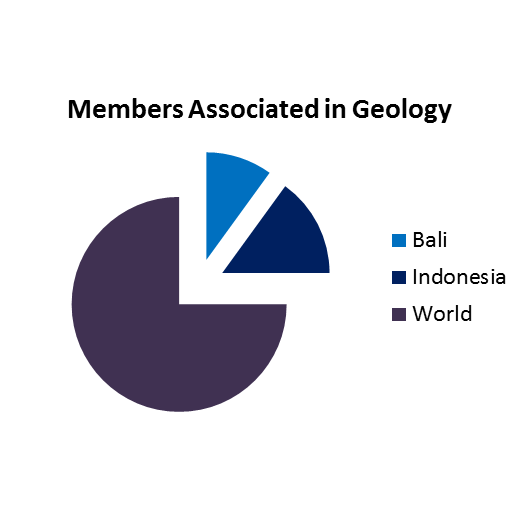
TARGET AUDIENCE:
Academic scientists, geologists, young researcher, Professors, Research Scientists and Students of different Universities containing Geological studies, eminent persons of different Geological Association and Societies. Directors, CEOs, Managers of different companies related to geology from all over the world.
% of Target Audience:
Academia - 40%
Industry - 35%
Associations - 15%
Government- 10%
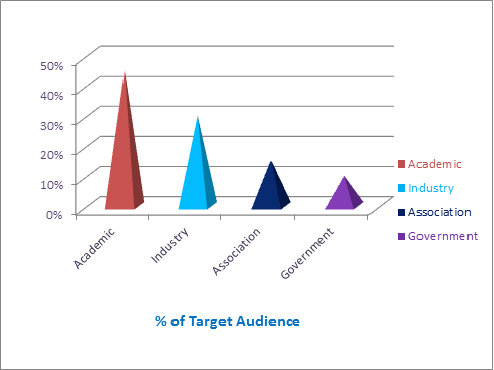
TOP UNIVERSITIES IN INDONESIA:
-Indonesia University
-Gadjah Mada
-Bandung Institute of technology
-Diponegoro University
-Pertanian institute of Bogor
-Sebelas Maret University
-Brawijaya university
-Negeri Yogyakarta University
-Padjadjaran university
-Airlangga University
FUTURE ANALYSIS OF STOCK AND CRUDE CHANGE:
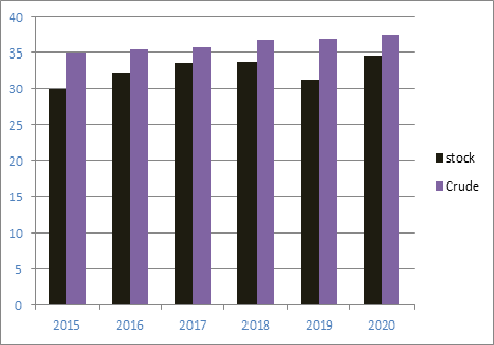
COMPANIES ASSOCIATED WITH GEOLOGY IN INDONESIA:
Indonesia Petroleum Association
Mineral Potential of Indonesia
Epithermal gold deposits in west Java
Association of Indonesian Geologist
Basrah Petroleum company
3D Geological modelling
Bali PMA Establishment package
Indonesia self company
State owned oil companies
RSC Mining and Mineral Exploration services
(KJPP) Nirboyo Adiputro, Dewi Aprianti & Partners is based in Jakarta
MARKET ANALYSIS OF OIL AND GAS:
Indonesia has approximately 150–153 trillion standard cubic feet (“TSCF”) of natural gas reserves. The BP Statistical Review of World Energy 2016 recorded 100.3 TSCF of proven reserves in Indonesia as of the end of 2015, with gas production reaching 75 billion m3 , which is a slight decrease from 2014. Of that production, 39.7 billion m3 was used domestically and the remaining was exported. LNG dominated the export stream with 21.9 billion m3 , while pipeline exports stayed at 10.5 billion m3 . According to the PwC Oil and Gas Guide 2016, Indonesia has approximately 453 trillion cubic feet (“Tcf”) of coal bed methane (“CBM”) reserves, which would rank Indonesia sixth in the world in terms of CBM reserves. Shale gas reserves are estimated at 574 Tcf. There were a total of 46 CBM contracts as of the end of 2015. Indonesia’s main areas for gas production are South Sumatra, East Kalimantan, Natuna, Sulawesi, and West Papua. LNG facilities in Indonesia include Bontang (East Kalimantan), Tangguh (West Papua) and the newest, Donggi Senoro (Sulawesi). According to a 15-year roadmap published by the Directorate General of Oil and Gas (“DGOG”) in April 2016, the Government of Indonesia (“Government”) forecasts a need for USD 24.8 billion in investment to enhance gas infrastructure. A national gas transmission and distribution network has been developed by the Ministry of Energy and Mineral Resources (“MEMR”). Gas pipelines and storage facilities may be owned and operated by private companies, subject to the regulations of the MEMR and the Downstream Oil and Gas Regulatory Agency (“BPH Migas”). In 2015, natural gas satisfied roughly 18% of Indonesia’s total energy requirements, with 37.6% and 41.1% met by oil and coal, respectively. Currently, Indonesia’s natural gas requirements are fully met by domestic production, particularly by the allocation of the domestic market obligation (“DMO”) of every Production Sharing Contract (“PSC”) Contractor. PSC Contractors are required by law and contract to reserve a minimum of 25% of their oil and gas production for the domestic market. According to the BP Statistical Review of World Energy 2016, the ratio of Indonesia’s natural gas production to consumption in 2015 was 189%. This is expected to change as, according to the BP report, the MEMR projects that Indonesia will start importing natural gas by 2019. Indonesia’s oil and gas sector is governed by Law No. 22 of 2001 regarding Oil and Gas (November 22, 2001) (the “Oil and Gas Law”). The state retains mineral rights throughout the Indonesian territory and the Government holds the mining authority. The oil and gas sector comprises upstream and downstream activities, which are separately regulated and organized. Upstream activities include exploration and exploitation, and are regulated under Government Regulation No. 35 of 2004 regarding Upstream Oil and Natural Gas Business Activities as has been amended several times, the latest by Government Regulation No. 55 of 2009 (“GR 35”). The upstream sector is managed and supervised by the Special Task Force for Upstream Oil and Natural Gas Business Activities (“SKK Migas”).

FUNDING OPPORTUNITIES:
All our work is funded by charitable donations. Donors include institutions, organisations and individuals. All who donate towards a specific project receive reports on the progress of that project. Indonesia is the fourth largest country in the world is home to more than 195 million people. Indigenous tribes still exist in Borneo to Iran Jaya in Eastern Indonesia. The presence of their pagan a vestry can still be seen, heard and felt by those who dare to breach the tourist frontiers. While much of Indonesia's allure lies in its rich cultural tapestry and untamed wilderness, its cities and resorts are also famed for world-class visitor facilities. Divers are a fast growing breed of special visitors to Indonesia's many shores. We acknowledge below our key donors and/or sponsors whose contributions – whether in cash or kind – have been most significant in furthering the goals of East Bali Poverty Project. We also have many expert volunteers (Indonesian and foreign) in every aspect of the project, who are too numerous to mention here.
Conference Highlights
- Geology and Environmental Sustainability
- Geology and Environmental Interactions
- Soil stability analysis
- Mining and Mineral Resources
- Geology in Civil Engineering
- Predictions in Soil Engineering
- Economical Evaluation of Soil
- Gas Reservoirs
- Conservation of Soil Biodiversity
- Structural Geology
- Soil Preservation Techniques
- Geographic Information System (GIS
- Soil and Ecosystem Services
- Soil Exploration
- Geological Hazard Assessment
- Soil and Rock Mechanics
- Environmental Geology
- Petroleum Geology
- Remote Sensing of Environment
- Geo-Technical Investigation Techniques
- Marine Geology
To share your views and research, please click here to register for the Conference.
To Collaborate Scientific Professionals around the World
| Conference Date | August 13-14, 2018 | ||
| Sponsors & Exhibitors |
|
||
| Speaker Opportunity Closed | Day 1 | ||
| Poster Opportunity Closed | Click Here to View | ||
Useful Links
Special Issues
All accepted abstracts will be published in respective Our International Journals.
Abstracts will be provided with Digital Object Identifier by







